Papers by Yamirka Rojas-Agramonte

The Sierra Maestra in southeastern Cuba comprises Paleogene intraoceanic volcanic arc sequences w... more The Sierra Maestra in southeastern Cuba comprises Paleogene intraoceanic volcanic arc sequences which have been accreted to the North American continental margin during the late Middle Eocene, during the final stages of collision with the Caribbean plate. Geochronological analysis and geobarometric investigations on samples from Eocene granitoids constrain the cooling history and tectonic evolution of the region. Granitoids intruded at pressures ranging from 1.8 to 3.0 kbar, corresponding to depths of approx. 4.5-8 km. 40Ar/39Ar dating of biotite yielded ages of 50+/-2 to 54+/-4 Ma (2-sigma errors), indicating cooling through ca. 300 oC. Zircon and apatite fission track ages range from 32+/-3 to 46+/-4 Ma and 31+/-10 to 44+/-13 Ma, respectively, and date cooling through 250+/-50 oC and 110+/-20 oC. These data suggest fast cooling and exhumation of the granitoids during collisional processes in the Eocene. Apatite track length measurements show a bimodal frequency distribution sugges...
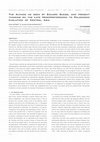
Eduard Suess recognized the unusual size and internal tectonic configuration of the mountainous t... more Eduard Suess recognized the unusual size and internal tectonic configuration of the mountainous terranes of Central Asia that he termed Altaids and which differ considerably from curvi-linear foldbelts such as the Alps and Urals. However, he did not realize that this orogenic domain or province evolved over a period of some 750 Ma from the late Mesoproterozoic (ca. 1000 Ma) to the late Permian (ca. 260 Ma), contains large volumes of pre-orogenic crust as well as many synorgenic metamorphic complexes, and exhibits many structures similar to modern thrust-and-fold belts. We therefore do not favour the name Altaids for this large orogenic domain because it is associated with the concept of an essentially Palaeozoic evolution and certain features that have since been shown to be incorrect. The non-genetic term Central Asian Orogenic Belt (CAOB) seems to be more appropriate and characterizes one of the largest accretionary terranes on Earth whose evolution has many similarities with the tectonics of the Indonesian Archipelago. In contrast to popular thinking, crustal growth in the CAOB during accretion was not anomalously high but was similar to that in the Palaeozoic Tasmanides of Australia and the Jurassic to Present evolution in southeastern Asia.
International Geology Review, 2014
ABSTRACT
Precambrian Research, 2013
Please cite this article in press as: Kröner, A., et al., Age, Nd-Hf isotopes, and geochemistry o... more Please cite this article in press as: Kröner, A., et al., Age, Nd-Hf isotopes, and geochemistry of the Vijayan Complex of eastern and southern Sri Lanka: A Grenville-age magmatic arc of unknown derivation. Precambrian Res. (2012), http://dx.
Lithos, 2013
and sharing with colleagues.
Journal of Structural Geology, 2013
and sharing with colleagues.
European Journal of Mineralogy, 2012
Abstract Jadeitite (jadeite jade) from Sierra del Convento (eastern Cuba) occurs in a subduction-... more Abstract Jadeitite (jadeite jade) from Sierra del Convento (eastern Cuba) occurs in a subduction-related serpentinite-matrix mélange associated with a variety of high-pressure tectonic blocks including garnet-amphibolites and related anatectic trondhjemites. The eastern Cuban jadeitite is massive and characterized by rare quartz inclusions and omphacite exsolution in jadeite crystals, as well as replacement or infilling by omphacite. Minor minerals include epidote, biotite, albite, phengite, titanite, rutile, zircon, and apatite. ...
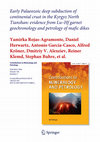
Contributions to Mineralogy and Petrology, 2013
eclogite-bearing metamorphic assemblages in the North Tianshan of Kyrgyzstan are known from the A... more eclogite-bearing metamorphic assemblages in the North Tianshan of Kyrgyzstan are known from the Aktyuz and Makbal areas, where eclogites and garnet amphibolites are associated with continental rocks such as granitoid gneisses in Aktyuz and shallow-water clastic (passive margin?) metasediments in Makbal. We present the first Lu-Hf isotope data for an eclogite and two garnet amphibolite samples from the two metamorphic terranes which, combined with petrological analysis, tightly constrain the age of high-pressure metamorphism in the Kyrgyz North Tianshan. A fivepoint isochron for an Aktyuz eclogite sample provides a Lu-Hf age of 474.3 ± 2.2 Ma, and a four-point isochron on a Makbal sample corresponds to 470.1 ± 2.5 Ma. A prograde, subduction-related path is inferred for both samples with peak P-T conditions ranging from 1.4 to 1.6 GPa and 610-620°C. A further Makbal sample provided a significantly older Lu-Hf age of 486 ± 5.4 Ma, most likely due to late alteration in the sample (late addition of unradiogenic Hf). We conclude that garnet growth in all three samples occurred around ca. 474 Ma and that these rocks likely experienced UHP metamorphism contemporaneously. Our results support previous geochronological evidence for an Early Ordovician collision belt in the North Tianshan and allow refinement of a tectonic model involving subduction of thinned continental crust to considerable depth along the margin of a small microcontinent.
Petrological and geochronological data of high pressure (HP) rocks from Cuba and Dominican Republ... more Petrological and geochronological data of high pressure (HP) rocks from Cuba and Dominican Republic indicate continuous subduction in the northern edge of the Caribbean since ca. 120 Ma. However, expected correlation of the associated subduction zone towards the west in Guatemala is uncertain, for similar HP rocks in this region have metamorphic ages as old as 150 Ma. In this contribution we present new geochemical and U-Pb/Lu-Hf ages of HP rocks from the Escambray terrane and the central Cuba serpentinite mélange ...
Lutetium-Hf geochronology is currently becoming a routine method for dating metamorphism of garne... more Lutetium-Hf geochronology is currently becoming a routine method for dating metamorphism of garnet bearing rocks, such as eclogites. Prograde garnet growth ages are mostly preserved because blocking temperatures exceed 630 • C [1] and prograde Lu zoning patterns have even been observed in samples that were exposed to temperatures above 800 • C [2]. Here we discuss Lu-Hf ages from various eclogite localities, such as the Northern Tianshan, Kyrgyzstan (∼ 470 Ma), the Kola Peninsula, Russia (∼ 1900 Ma) [3], Cuba (∼70 Ma and ∼124 Ma), Alpine Corsica (∼ 34 Ma) and the Tauern Window (∼32.7 Ma). Age precisions are in the order of 0.1 to 1 % and all ages can be safely attributed to the timing of garnet growth.
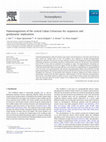
Tectonophysics, 2009
A detailed palaeomagnetic study of Cretaceous age volcanic and sedimentary arc rocks from central... more A detailed palaeomagnetic study of Cretaceous age volcanic and sedimentary arc rocks from central Cuba has been carried out. Samples from 32 sites (12 localities) were subjected to detailed demagnetisation experiments. Nineteen sites from the Los Paso, Mataguá, Provincial and Cabaiguán Formations yielded high unblocking temperature, dual polarity directions of magnetisation which pass the fold tests with confidence levels of 95% or more and are considered to be primary in origin. The palaeomagnetic inclinations are equivalent to palaeolatitudes of 9°N for the Aptian, 18°N for the Albian. A synfolding remanence identified in 5 sites from the younger Hilario Formation indicates a late Cretaceous remagnetisation at a palaeolatitude of 16°N. Our results are in good agreement with previous palaeogeographic models and provide the first high quality palaeomagnetic data demonstrating the gradual northward movement of the Cretaceous Volcanic Arc throughout the Cretaceous. The declination values obtained all indicate significant and similar amounts of anticlockwise rotation from the oldest sequences studied through to the late Cretaceous remagnetisation. This rotation is most likely related to collision of the arc with the North American plate and transpressional strike slip movement along the northern margin of the Caribbean plate as it progressed eastwards into the large Proto-Caribbean basin.
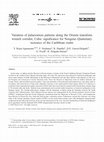
The Neogene to Recent North Caribbean (Oriente) Transform Fault (OTF) off the coast of southern C... more The Neogene to Recent North Caribbean (Oriente) Transform Fault (OTF) off the coast of southern Cuba is part of the northern Caribbean transform fault system. It has affected the southern Sierra Maestra mountain range, SE Cuba, and portrays the dynamics and tectonic evolution of the southern Cuban coast in the boundary zone between the Caribbean and North American plates. The region has been affected by historical earthquakes and shows many structures due to brittle deformation in Neogene to Pleistocene shallow-water limestones. Present-day structures vary along strike of the OTF, with dominant transpression in the east and transtension in the west. The focal mechanisms of historical earthquakes are in agreement with dominant ENE-WSW compression found onland. Neogene-Pleistocene limestones are deformed, faulted, fractured, and contains calcite- and karst-filled extension gashes. Type and orientation of the principal normal paleostresses vary along strike in accordance with observations of large-scale submarine structures at the southern Cuban continental margin. Deformation phase D1 comprises N-S extension, exemplified mainly by karst-filled extensional veins and normal faults. We correlate this deformation with the regional kinematics in the Caribbean realm, imposed by the opening of the Cayman trough and the disruption between Cuba and Hispaniola. D2 and D3 comprise NE-SW to nearly N-S and subsequent NW-SE-directed compression and generated conjugate Mohr shears that correlate with strike-slip movement along the main fault to the south. These phases are also associated with a transpressional tectonic regime in the submarine Santiago Deformed Belt and with deformation processes along the Oriente Deep, both located off the southern Cuban coast. D4 reflects ENE-WSW to E-W-directed compression and corresponds to reactivation of sinistral strike-slip faults and formation of Riedel shears, consistent with stress orientations deduced from earthquake focal mechanisms. The present-day stress field in the Neogene to Pleistocene deposits in the southern Sierra Maestra evolved from oblique collision to transcurrent movement with a combination of transpression in the east and transtension in the west.







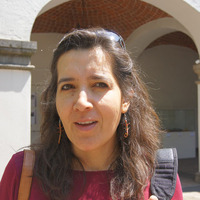


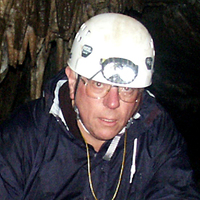
Uploads
Papers by Yamirka Rojas-Agramonte